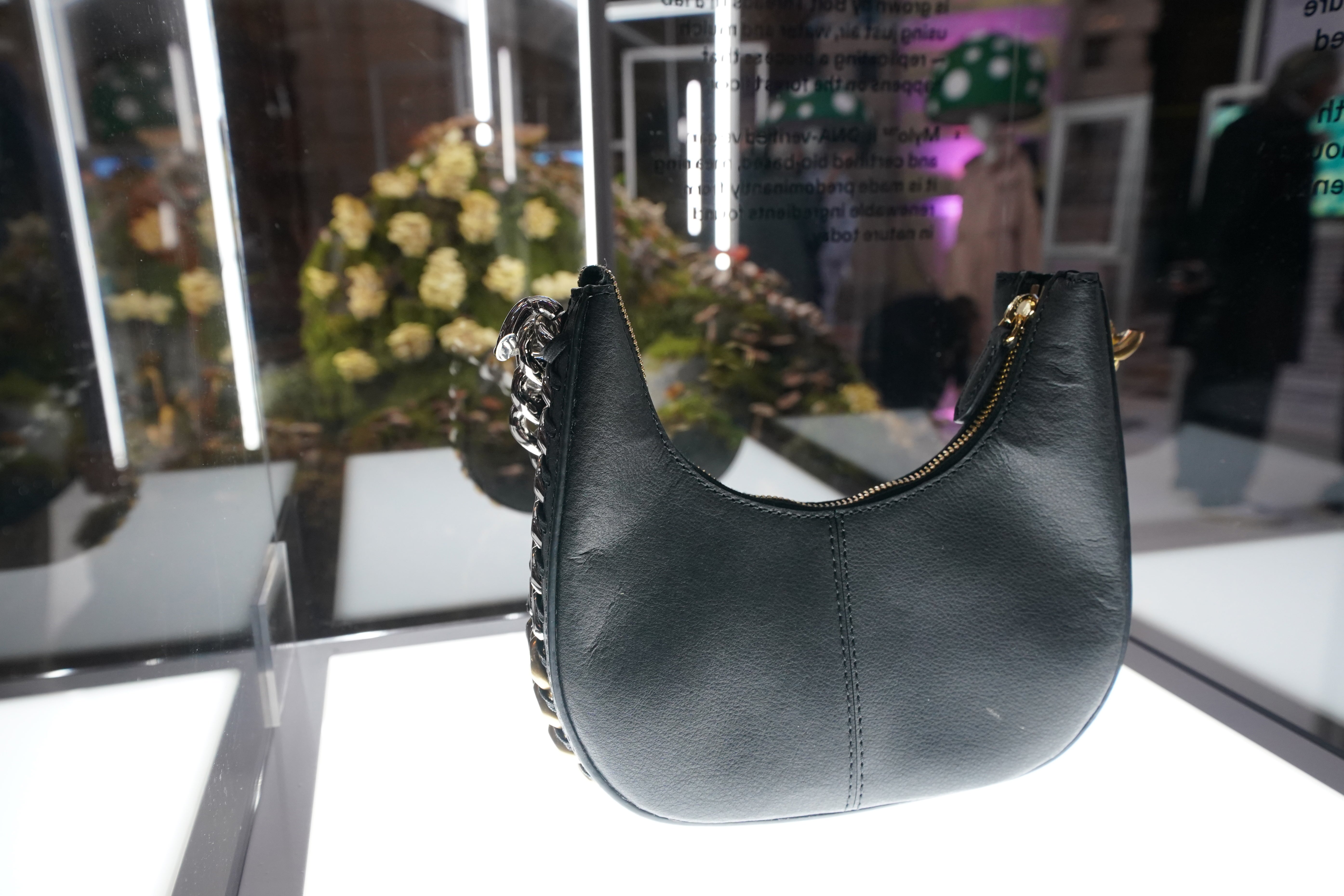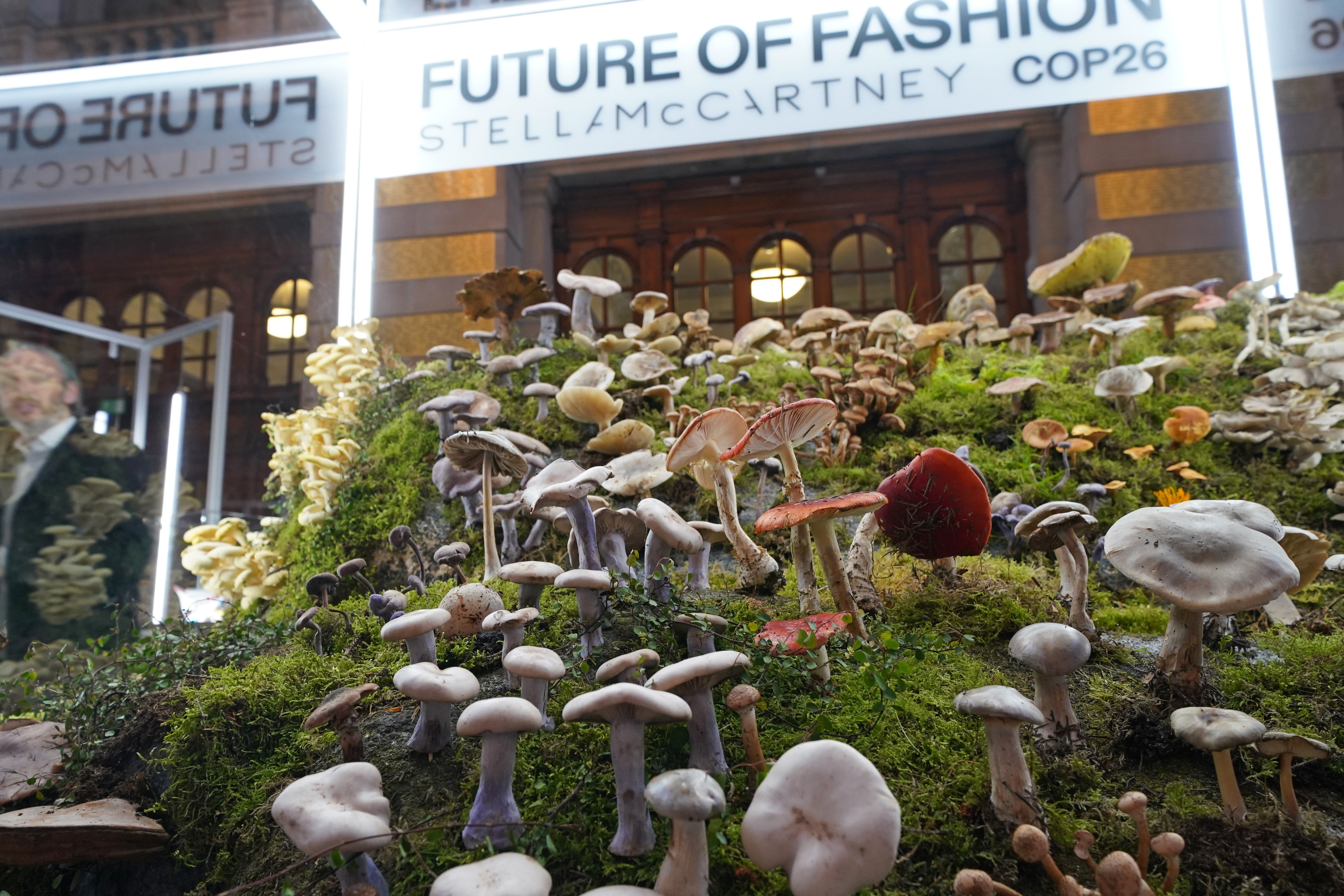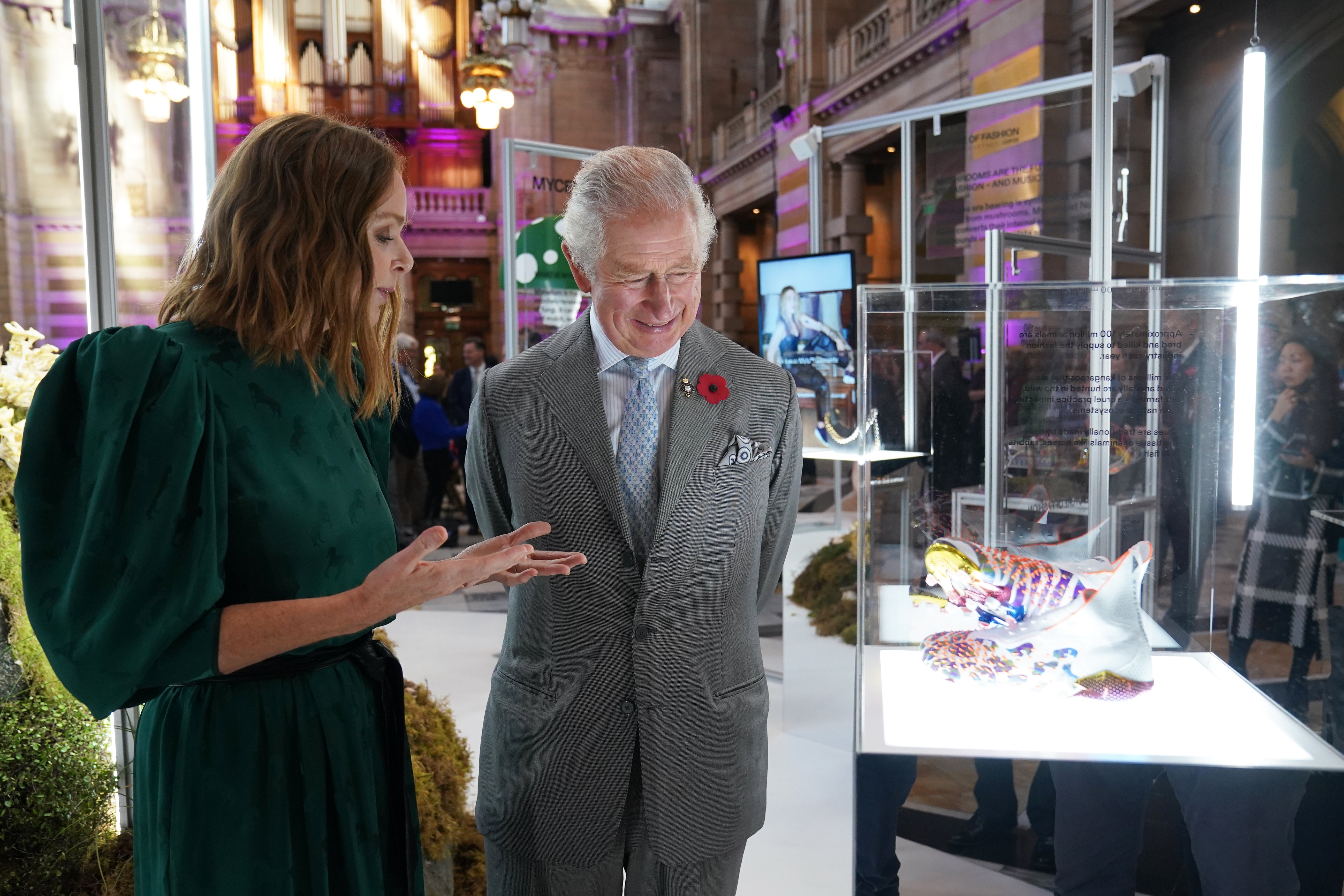This took me by surprise. turns out it is great at producing a quality leather and plausibly a substrate for high quality plastics as well. Do expect this to take over a huge number of markets and certainly eliminate all the fake plastic leather products. no loss there.
This will also plausibly replace our non biodegradable plastics as well, but this will take time.
Yet I am now seriously hopeful that this can work as the fibre will be biodegradable even if the plastic binder is not so much. This is finally a path forward.
Mycelium’s magic moment
Photo: Getty Images(Owen Humphreys-WPA Pool/Getty Images)
For years now, researchers have been touting mycelium as a miracle material. The thread-like filaments that form the root structure of fungi can be engineered to replace styrofoam, plastic, home insulation, and other substrates choking the planet.
But it would take designers to make mycelium desirable. Now sustainability-minded fashion brands like Hermes, Adidas, Gucci, and Stella McCartney are igniting the so-called “mycelium revolution,” showcasing the abundant material in covetable handbags, garments, sneakers, and furniture. “Mushroom leather” is not at all like the cheap, synthetic pleather of yore. It’s as buttery, strong, and luxurious as animal hide—minus the guilt and carbon emissions.
Suddenly, “mushroom leather”—technically a misnomer, we’ll get into that later—has become the epitome of luxury.
Here’s what to know about the leather fungus among us.
The Future of Progress. Tackling two of the greatest challenges of our time — a broken food system and gender inequality — present enormous opportunities to improve the lives of millions of people. The 2022 Goalkeepers Report explains how the world can accelerate solutions to these problems with human ingenuity, innovation, political will, and sustained funding.
By the digits
$89.6 billion: Projected size of the vegan leather market by 2025, overtaking the traditional leather goods industry pegged at $86.3 billion by 2027
5.5 million: Animal hides that went to waste in the US in 2019
$810: Price of French-American milliner Nick Fouquet’s mycelium leather bucket hat
$299: Price of a Transylvanian amadou mushroom hat, the OG mycelium lover’s headgear famously worn by the influential mycologist Paul Stamets
9 days: Time needed to grow roughly 500 sq. ft. of mycelium
7 weeks: Average time to prepare cow leather (not counting the time from a calf’s birth to the tannery)
$50: Cost of mushroom leather per square foot, but as low as $30 for some brands
$125 million: Funding biotech startup MycoWorks raised to scale up production—they’re currently building a $107 million dollar factory in South Carolina
What is mycelium? And how does it become a handbag?
You know that white fuzz that builds up on the surface of a piece of fruit, say a strawberry, that you’ve kept for way too long?
Think of mycelium as the root structure of fungus—a network of fine threads (called hyphae) that aids the decomposition of dead material and feeds nutrients back to the soil. Depending on the species, mycelium comes in a variety of shapes, textures, and colors.
How does it go from fuzz to leather? Manufacturers like Ecovative grow blocks of mycelium in labs and compress them into “bacon, leather-like hides.” Others, like MycoWorks “custom-grow” sheets of mycelium in trays of varying sizes depending on a client’s specifications.
So, the term “mushroom leather” is actually a misnomer. Mushrooms are the fleshy body of a fungus—the cap, stalk, and gills—that pops above ground. But when it comes to leather imitations, it’s the roots that matter.
\
Quotable
“Nobody loves leather because it comes from a cow.”
—Bolt Threads CEO Dan Widmaier at the 2022 TED conference
Photo: Getty Images(Owen Humphreys-WPA Pool/Getty Images)
Know thy mushroom
Scientists have identified over 100,000 species of fungi, and some are particularly suited for making biomaterials. So far, two species have emerged to be the favorites among designers looking for leather substitutes.
Reishi (ganoderma lucidum): The edible reddish-brown staple of Eastern medicine is known to be sturdy and soft. MycoWorks developed and named its first “fine mycelium” product after it.
Oyster mushrooms (pleurotus ostreatus): Called “hiratake” in Japan and “dhingri” in India, this common mushroom was first cultivated in Germany during World War I. Companies like Ecovative Design (pdf) prefer its sturdy, spongy quality.
Photo: Reuters(Irene Barlian/Reuters)
What is not a brand of mushroom leather?
A. Forager
B. Leap
C. Muskin
D. Mylea
Find the answer at the bottom, where it lurks like the roots of a fungus!
Brief history
Cryogenian age: Researchers believe that the mushrooms appeared on the Earth’s surface 715-810 million years ago.
1800s: Austrian botanist Leopold Trattinnick coins the word “mycelium.”
2005: Publication of the seminal book Mycelium Running: How Mushrooms Can Help Save the World.
2006: Biomaterial engineers Eben Bayer and Gavin McIntyre filed a patent for a packaging material made from mycelium; their company Ecovative has since retooled their technology for industries including beauty and packaging.
2012: Danish product designer Jonas Edvard develops MYX, a versatile fabric made from commercial oyster mushroom production waste and hemp. Artist Philip Ross exhibits his line of mycelium furniture in San Francisco.
2019: Fifteen years in the making, Louie Schwartzberg’s documentary Fantastic Fungi premieres.
2020: California startup MycoWorks wows fashionistas with “fine mycelium leather” at New York Fashion Week.
2021: Adidas debuts the Stan Smith Mylo, its first sneaker made with lab-grown mycelium; Hermes uses the material to produce handbags, while Stella McCartney uses it to make a garments line.
2022: Lululemon’s mushroom leather gym bags go on sale.
Fun fact
“Humongous Fungus,” a mushroom that occupies 965 hectares in Oregon’s Malheur National Forest, is considered the world’s second largest living organism. (A seagrass in Western Australia just eclipsed the mega shroom this year.)
Picture worth a thousand words
Photo: (Courtesy of Bolt Threads)
Near identical microstructures of cowhide collagen (left) and mycelium (left) demonstrate the similarities between mushroom leather and animal leather; from Bolt Threads CEO Dan Widmaier’s TED talk.
Listen up!
“Music to Grow Mushrooms to”
Experimental composer Ernestus Jiminy Chald recorded a track that purportedly encourages mycelium to grow 30% faster than those growing in silence.
Take me down this 🍄 hole!
A world of vegan leathers
Mushroom leather might be the buzziest vegan leather today, but it’s certainly not the only animal hide substitute vying for market share. Companies around the world are making leather from a cornucopia of organic materials:
🇲🇽 A Mexican startup has used a type of prickly pear to develop a leather they call “Desserto.” Collabs include Mercedes Benz, Givenchy, and BMW.
🇪🇸 Piñatex is a material that B-Corps Ananas Anam developed from pineapples. Its founder was inspired by the pineapple production in the Philippines, where the fruit’s fiber (jusi) is used in traditional garments.
🇫🇲 A social enterprise in Micronesia developed leather from the husks of banana trees.
🇮🇹 Vegea, an Italian biomaterials company, created upholstery leather for Bentley using grapes and byproducts from wine production.
Photo: Getty Images(Owen Humphreys-WPA Pool/Getty Images)
Would you switch to mushroom leather?





No comments:
Post a Comment